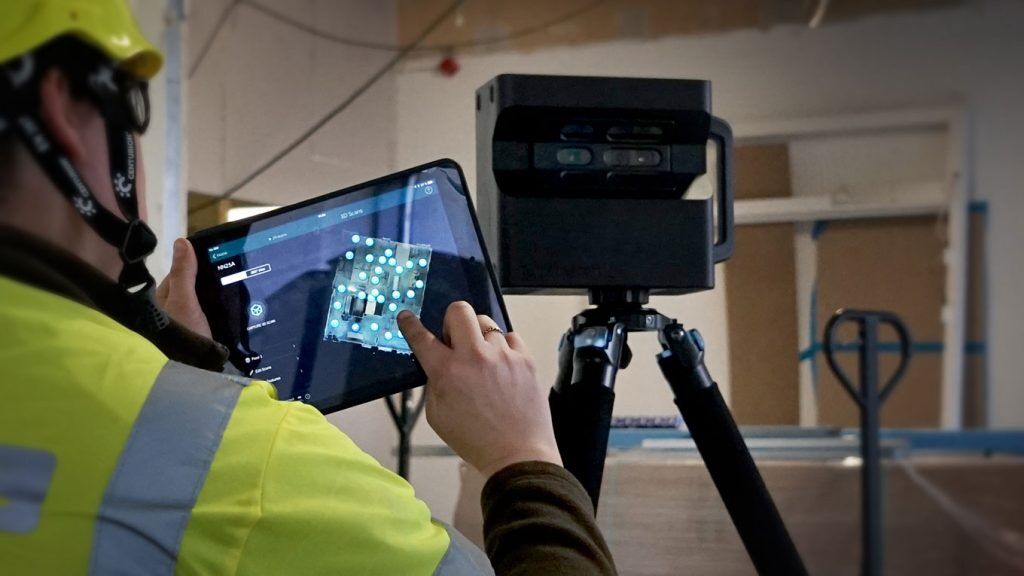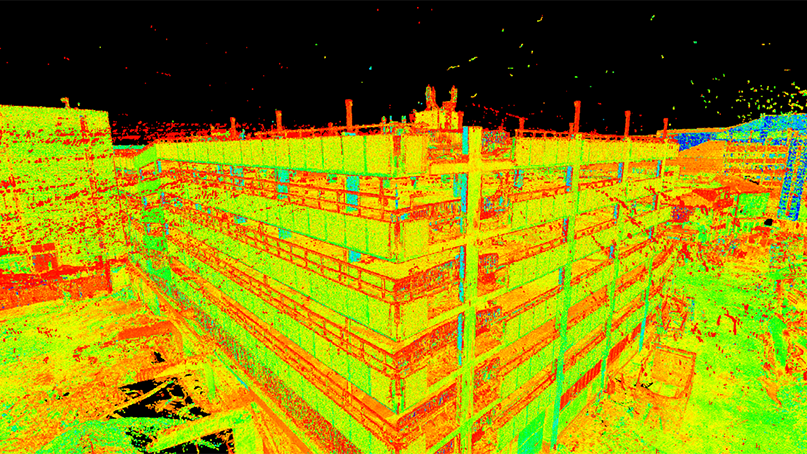A Complete Guide to Using 3D Scanning in Design Development
Checking out the Applications of 3D Laser Scanning in Archaeology and Cultural Heritage Preservation
The assimilation of 3D laser scanning innovation in archaeology and cultural heritage conservation notes a substantial development in just how archaeological sites and artefacts are recorded and assessed. This non-invasive approach provides accurate spatial data, revealing elaborate details that were previously challenging to record. As the applications of this modern technology remain to advance, numerous effects for paperwork, education, and conservation emerge, welcoming further expedition into its transformative influence on the field.
Comprehending 3D Laser Scanning Modern Technology
3D laser scanning innovation has revolutionized the field of archaeology by providing comprehensive and precise spatial data. This innovative technology employs laser light beams to catch numerous information factors from a things or site, creating an extremely accurate three-dimensional depiction (3D Scanning). The resulting factor clouds can reveal elaborate details of historical sites, structures, and artefacts that may be unseen to the nude eye
Utilizing this technology, excavators can document the precise dimensions, forms, and placements of items with unprecedented precision. This method minimizes the risk of human mistake and gets rid of the need for considerable hands-on dimensions. Furthermore, the information gathered can be examined and shared conveniently, promoting partnership amongst scientists. By incorporating 3D laser scanning with GIS and other digital tools, archaeologists enhance their ability to envision and analyze historical contexts, leading to much deeper understandings right into ancient cultures and settings.
Enhancing Archaeological Paperwork
3D laser scanning substantially improves historical documentation via its capacity to produce exact site maps. This modern technology facilitates detailed artifact evaluation, giving insights that traditional techniques may ignore. Furthermore, it ensures the preservation of contextual information, which is important for understanding the relationships within historical sites.
Accurate Site Mapping
While typical mapping methods typically have problem with recording the complex information of historical sites, progressed laser scanning modern technology offers an innovative method to precise site mapping. This technique enables archaeologists to create very described and exact three-dimensional representations of sites, showcasing topographical variants and structural functions with exceptional integrity. The ability to catch millions of information points in a matter of minutes permits comprehensive documents, which can be conveniently updated and shared amongst scientists. Furthermore, laser scanning promotes the measurement of intricate geometries that would be tough to analyze utilizing traditional devices. Because of this, this innovation boosts the precision of website maps, contributing significantly to the preservation and understanding of social heritage resources.
Comprehensive Artifact Evaluation
Laser scanning innovation considerably boosts the evaluation of historical artifacts, supplying scientists with extraordinary information and accuracy. This approach records elaborate surface textures, measurements, and includes that conventional paperwork strategies might neglect. By creating high-resolution 3D models, scholars can closely examine artefacts without the danger of damages integral in physical handling. This precision permits for better relative researches, allowing specialists to identify production techniques, stylistic variations, and prospective cultural value. The ability to adjust and picture data in three measurements promotes a much deeper understanding of artefact capability and usage. On the whole, laser scanning cultivates an extra complete strategy to historical paperwork, guaranteeing that necessary details concerning artifacts is preserved for future research study and education.
Preservation of Contextual Information
Maintaining contextual data is crucial for improving historical documents, as it ensures that searchings for are recognized within their original ecological and social structures. 3D laser scanning modern technology greatly adds to this conservation effort by catching detailed spatial partnerships amongst artifacts, frameworks, and their atmospheres. By generating accurate 3D models, excavators can record the exact places and alignments of things sitting, facilitating an extensive understanding of their context. This innovation enables researchers to review and assess websites long after excavation, preserving the honesty of contextual details. On top of that, electronic documents created via scanning can be shared internationally, cultivating collaborative research and public engagement. Ultimately, protecting contextual information with 3D laser scanning enhances archaeological stories and advertises a much more profound admiration of social heritage.
Preservation of Cultural Heritage Sites
As advancements in modern technology continue to progress, the conservation of cultural heritage sites has come to be increasingly dependent on ingenious techniques such as 3D laser scanning. This innovation enables the comprehensive documents of artifacts, landscapes, and structures, recording their precise dimensions and spatial connections in a non-invasive fashion. By producing high-resolution 3D versions, researchers can assess and check wear and tear patterns, allowing aggressive preservation techniques.
Additionally, 3D laser scanning helps with the sharing of in-depth site information with the global neighborhood, promoting collaboration amongst excavators, historians, and preservationists. These models function as important resources for education and public engagement, raising awareness of social heritage issues. The electronic documents produced can safeguard against loss due to environmental elements, vandalism, or disregard. Generally, 3D laser scanning stands for a transformative technique to the preservation of cultural heritage, making certain that these sites can be examined and valued by future generations.

Restoration and Reconstruction Initiatives
The comprehensive documents attained with 3D laser scanning plays a significant role in reconstruction and reconstruction initiatives within archaeology. This modern technology supplies specific measurements and high-resolution imagery, permitting exact digital models of structures and artefacts. These versions act as crucial referrals during repair procedures, enabling excavators to picture the initial design and make educated decisions about products and techniques required for fixing.
Additionally, 3D laser scanning helps with the restoration of damaged or shed elements by creating detailed replicas. This procedure help in making sure that repairs preserve historical stability while also allowing for innovative approaches to recover sites. The capability to assess wear patterns and architectural weak points via checked data boosts understanding of a website's historical context and its use over time. 3D laser scanning not only maintains the physical elements of cultural heritage but also improves the story of history, directing future restoration undertakings.
Educational and Research Study Opportunities
The combination of 3D laser scanning in archaeology opens up substantial instructional and research study opportunities. Academic collaborations can improve the understanding of ancient websites, while specialized training workshops furnish professionals with vital skills for using this innovation. Together, these initiatives cultivate a richer interaction with archaeological techniques and approaches.
Academic Collaborations in Archaeology
Collaborative efforts in archaeology have ended up being progressively important for advancing both academic and research chances. By fostering collaborations among colleges, research study establishments, and cultural heritage companies, these collaborations facilitate the exchange of expertise and resources, boosting the top quality of historical studies. Joint projects commonly leverage varied competence, permitting thorough analyses and innovative approaches, specifically in the application of technologies like 3D laser scanning. Such partnerships additionally advertise interdisciplinary approaches, engaging areas such as location, history, and conservation science. On top of that, academic partnerships usually cause the development of new curricula and training programs, preparing the future generation of check my source archaeologists to successfully make use of innovative innovations in their job. Inevitably, these partnerships add to the conservation and understanding of social heritage.
Training Workshops for Professionals
Educating workshops for experts in archaeology are significantly essential for boosting skills in the application of sophisticated technologies such as 3D laser scanning. These workshops give individuals with hands-on experience in using innovative devices and software, fostering a much deeper understanding of explanation information capture and evaluation procedures. Experts can discover to produce accurate electronic versions of historical sites, which noticeably aid in documentation and conservation efforts. Additionally, these training sessions frequently consist of discussions on finest techniques and situation research studies, promoting expertise exchange amongst participants. By spending in constant education and learning, experts can stay upgraded on advancing modern technologies, inevitably boosting the effectiveness of their study and cultural heritage conservation efforts. This commitment to ability enhancement is essential for progressing the field of archaeology.
Future Patterns in 3D Laser Scanning for Archaeology
As innovations in innovation remain to reshape various areas, the future of 3D laser scanning in archaeology guarantees to boost both the precision and efficiency of website documentation and analysis. Arising trends indicate an expanding assimilation of man-made intelligence and artificial intelligence, assisting in automated information processing and analysis. This evolution will permit excavators to evaluate complicated datasets faster, bring about faster insights into historic contexts.
Additionally, the assimilation of drone technology with 3D laser scanning is likely to increase, making it possible for extensive airborne studies of historical sites that are difficult to gain access to. The enhancing cost of scanning devices will democratize gain access to, empowering smaller institutions and independent researchers to utilize these tools properly. Furthermore, advancements in online truth and increased truth will certainly allow immersive experiences for public involvement and education and learning, making historical findings much more easily accessible and interactive. These patterns collectively signal a transformative future for archaeology, enhancing conservation efforts and expanding the discipline's outreach.
Frequently Asked Questions
Just How Much Does 3D Laser Scanning Devices Expense?

What Are the Limitations of 3D Laser Scanning?
The constraints of 3D laser scanning include high expenses, prospective information handling difficulties, level of sensitivity to environmental conditions, and trouble catching complex information her comment is here in complicated surface areas, which can influence the precision and efficiency of checked depictions. (3D Scanning)

Can 3D Laser Scanning Be Utilized Undersea?
Yes, 3D laser scanning can be made use of underwater, yet it calls for specialized equipment and strategies to get rid of difficulties such as water distortion and limited presence. Effective applications have been shown in marine archaeology and undersea surveys.
How much time Does a Scanning Project Generally Take?
A scanning project commonly takes anywhere from a few days to several weeks, depending on the intricacy and dimension of the area being checked, along with the prep work and post-processing demands entailed in the job.
Exist Details Software Program Requirements for Processing 3D Checks?
Yes, particular software program demands for refining 3D scans include programs efficient in taking care of big factor clouds, such as Autodesk ReCap, Cyclone, or MeshLab. These devices facilitate evaluation, visualization, and assimilation into numerous applications effectively.
The integration of 3D laser scanning innovation in archaeology and social heritage preservation notes a significant improvement in how historical websites and artifacts are documented and analyzed. 3D laser scanning modern technology has revolutionized the field of archaeology by giving comprehensive and exact spatial data. As advancements in innovation continue to progress, the preservation of cultural heritage sites has actually come to be increasingly reliant on ingenious approaches such as 3D laser scanning. As developments in innovation proceed to improve numerous areas, the future of 3D laser scanning in archaeology promises to enhance both the precision and effectiveness of site documentation and analysis. The combination of drone technology with 3D laser scanning is likely to broaden, making it possible for detailed aerial surveys of archaeological sites that are challenging to gain access to.